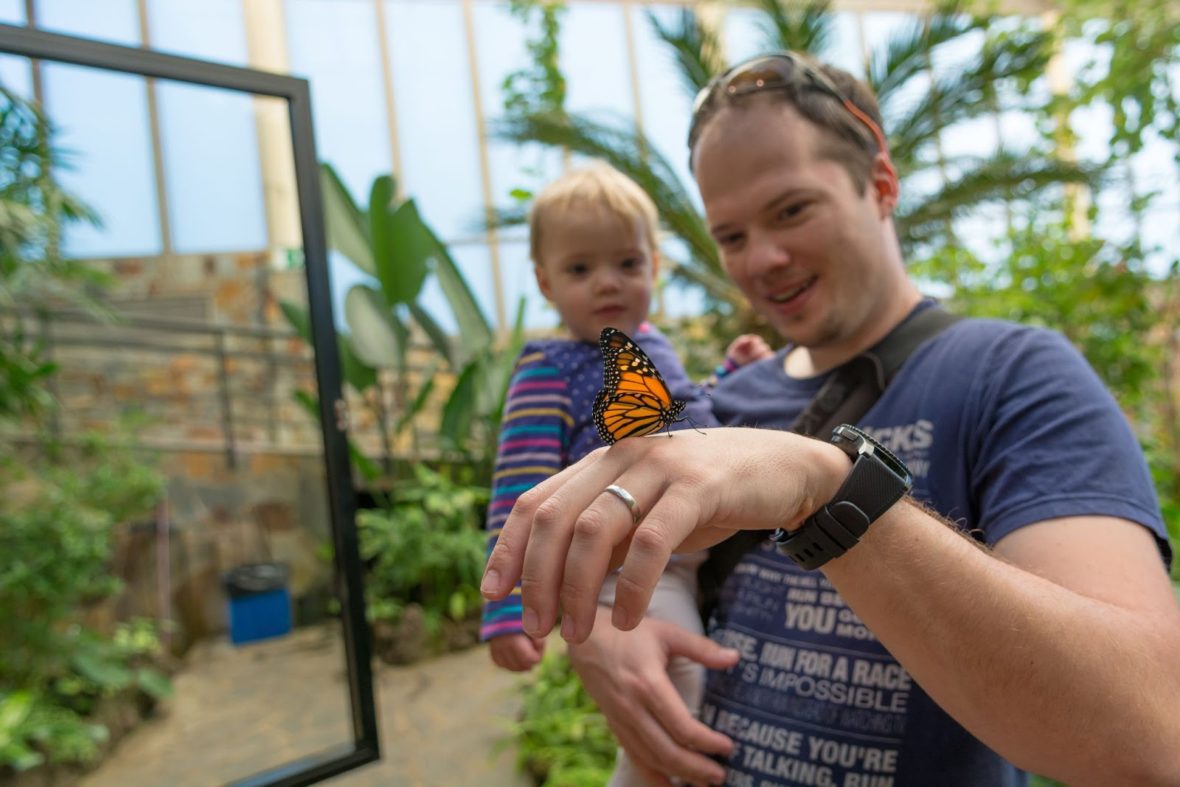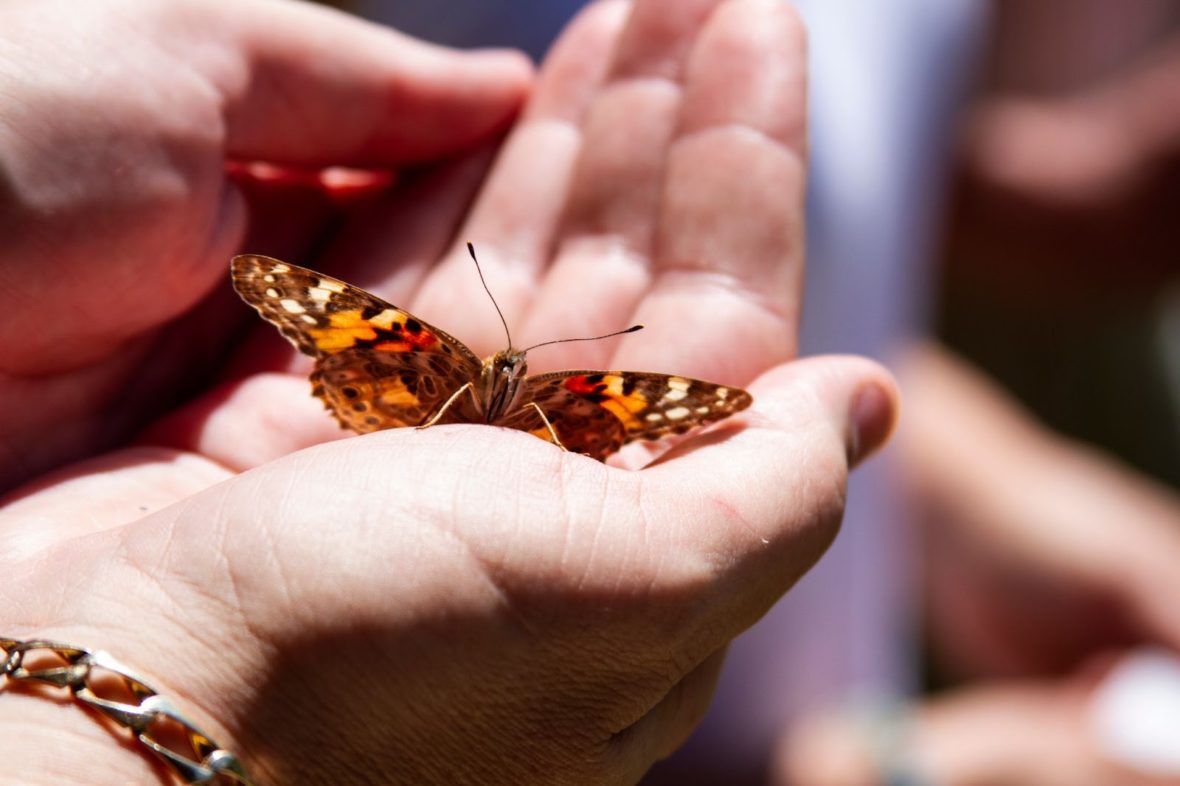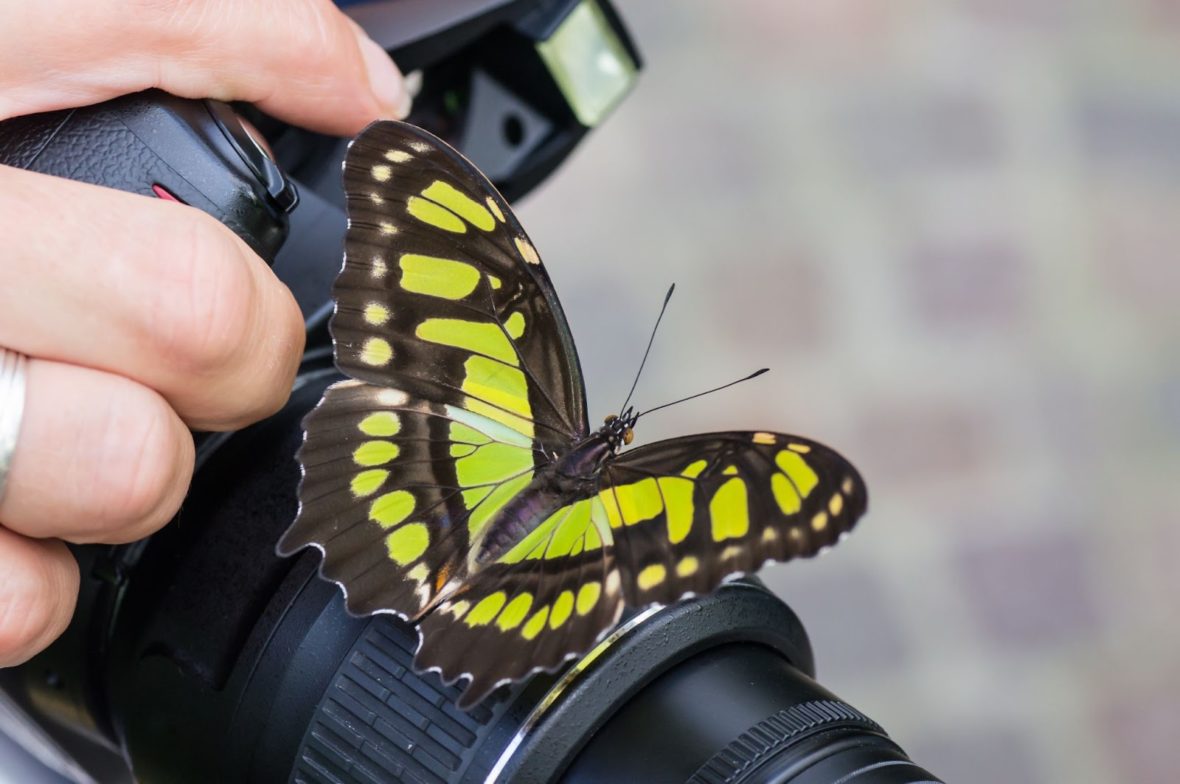Unraveling The Role Of Butterfly Farms In Conservation
Butterfly Farms – what comes to mind when you hear this term? Is it a large field of flowers, sunbonnets, and a butterfly net? A laboratory with white coats and scientific equipment? Greenhouses full of plants and sweaty farmhands? You might be partially correct if you said yes to any of these! Butterfly farms are an uncommon yet real industry in the United States and many countries across the globe.
In the United States, most butterfly farms were born out of a passion for our native lepidopteran species. For some people, the love and fascination of butterflies will turn into a small business that spreads education and native butterfly species either locally or across the continent. Not for the faint of heart, butterfly farms are hard, relentless work. During the busy spring and summer, the butterfly farmer is busy tending to plants, feeding caterpillars, packaging and shipping live insects, and providing educational seminars to spread awareness of the insects they love.
Butterfly farms are not unique to the United States. You can find them in many other countries worldwide. There are several markets that butterfly farms serve: Exhibits at zoos and museums, educational institutions and teachers, research facilities, release events, and butterfly hobbyists.
WHO BUYS BUTTERFLIES AND WHY?
EXHIBITS

If you visit a local exhibit at a zoo or museum, you may see many beautiful tropical butterflies not native to the United States. Most commonly, exhibits import butterflies from out of the country. It is hard for our native butterflies to compete with these exotic species. In some exhibits, upon looking closer, you may start to notice butterflies that look familiar: the Gulf Fritillary, Monarch, Painted Lady, Common Buckeye, Zebra Longwing, and others – butterflies that are not as large and showy but vitally important to display to increase awareness of our native butterfly species. If you have a butterfly exhibit near you, ask if they use native butterflies to populate the exhibit – and if not, encourage them to include natives in addition to the exotic species they currently display.
EDUCATIONAL INSTITUTIONS

Educational Institutions purchase butterflies for teaching purposes – whether introducing children to the wonder of metamorphosis in a classroom or university students studying insects in their biology class. Many elementary schools grow butterfly gardens and use caterpillars to illustrate the life cycle of a butterfly or moth. Children learn best when they can see and experience what they are learning instead of only reading about the topic. Watching caterpillars eat, grow, pupate, and emerge as adult butterflies may encourage a lifelong passion for our native pollinators. By utilizing a butterfly farm, schools can ensure that the caterpillars are available at the right time of the year for their unit study and obtain healthy, disease and parasitoid-free specimens. Entomologists and lepidopterists who work with insects as adults will often recall a moment as a child when their interest started, eventually growing into a career dedicated to protecting and discovering more about these insects.
RESEARCH FACILITIES

Research facilities will not only use butterflies to study behaviors, migration, and genetics, but they will also use butterflies to test pesticides and insecticides. This significant contribution to butterfly conservation is an invaluable role a butterfly farm plays. Butterflies purchased from a butterfly farm are used in tests to ensure that the mosquito spraying will not harm local butterfly populations. Researchers study crop pesticides to find ways to reduce crop pests without harming butterflies that may visit but do not host on the food crop grown. Monarch butterflies are frequently purchased in large quantities and tagged during the fall migration season to study their migratory paths further. All this research will positively impact butterfly populations in the future. It would not be possible without the help of butterfly farms, which typically sell to researchers at a discounted rate. Butterfly farmers are passionate about protecting the butterfly population and encourage the use of butterflies for education.
HOBBYISTS

Butterfly hobbyists are at the forefront of butterfly conservation – growing and maintaining diverse butterfly gardens in place of manicured landscapes with non-native plants. With the loss of native habitat due to construction and both residential and governmental weed control, these small home gardens are essential in providing extra food for the butterfly’s larval stage. An adult female butterfly can lay hundreds of eggs in her lifetime, but only around 3% survive in the wild. Every additional butterfly released by a hobbyist can help boost local populations and give the species a greater chance of long-term survival. Due to the shared passion for butterflies, farmers are eager to help hobbyists tackle any issues they encounter, giving advice and help without asking for any monetary return.
RELEASE EVENTS

We have all heard of butterfly releases at weddings, memorials, and celebrations. These releases also boost local butterfly populations! A USDA permit is required to ship across state lines. These permits only authorize the release of native butterflies. Butterfly farmers will apply for and maintain permits for each state and butterfly species they send. So, if you see a butterfly release near you, you know that all species released are native to the state. The USDA also prohibits collecting adult butterflies from the wild and shipping them across state lines, so butterfly farmers do not reduce local butterfly populations when providing butterflies for release events elsewhere.
PUBLICATIONS/MEDIA

Another market that butterfly farms serve is the publications and media industries. Providing butterflies for book illustrations, movies, commercials, and documentaries is a crucial role butterfly farms play in increasing awareness of native butterflies and conservation needs. Authors will often reach out to butterfly farmers to help procure an image needed for their publication. Most production companies are on a strict deadline and cannot spend the time and money trying to find a butterfly in the wild to get the perfect shot needed for a film. So instead, they contact a butterfly farm with their needs, and the butterfly farm can provide the butterflies they need along with instructions on how to get the butterfly to cooperate with filming!
WHO IS RAISING ALL THESE BUTTERFLIES?

The quintessential small business, butterfly farms here in the states rarely employ more than five people, including their owners. Mom and pop operations are common, utilizing a converted garage or outbuilding to raise butterflies sold to customers. Butterfly farming is frequently not the owner’s only source of income, and some years the farm will not bring in the necessary revenue to cover expenses. It is not lucrative for many farmers due to the heavy labor and the seasonal aspects of the business. Farmers are often willing to take second jobs to keep from giving up on raising butterflies.
Covid-19 was hard on most butterfly farms when outdoor release events were canceled and butterfly exhibits and schools were closed. Coming out of these challenging times, farmers find that inflation has greatly affected costs on all aspects of their business, from plant fertilizer and rearing supplies to shipping costs. Yet these farms persist, unwilling to give up on their passion for increasing butterfly populations and awareness.
GENEROSITY
If you contact a butterfly farm with a request they can’t fill – maybe your wedding is coming up, and you want to release native butterflies, or you are teaching about the Monarch life cycle in your classroom and can’t wait a week or two until they have stock available to ship – the farmer who can’t help will most likely call other butterfly farmers to find a source for you or they will provide you with names and numbers of alternative farmers to contact. As a networking community, you can feel the difference when dealing with an average butterfly farmer. Their passion and desire to help others experience the wonder of butterflies will outweigh any competitiveness in the industry. They will take time to try and help whomever they can, even without any promise of compensation.
SPREADING AWARENESS

Many farmers will do seminars and educational events at schools, libraries, and garden clubs. These presentations and teaching events help increase knowledge and awareness of our local butterfly species and how every person can help with conservation. Outside of these events, farmers find themselves in long conversations in many places, from local plant nurseries to standing in line at the grocery store – enthusiastically teaching about butterflies and how to protect them. Their passion for butterflies is contagious and quickly spreads as they instruct and share.
TRICKS OF THE TRADE

Butterfly farmers take rearing practices seriously. If a farmer does not take steps to prevent the many diseases, parasitoids, and predators that affect butterflies, a farm will soon be out of business. Sanitizing everything from labs, rearing containers, plant food, and even butterfly eggs is crucial to successful butterfly rearing. Many farmers belong to a group such as the Association for Butterflies, International Association of Butterfly Exhibitors and Suppliers, or the International Butterfly Breeding Association. These groups offer educational courses, disease testing services, and butterfly farming community input to help raise healthy butterflies.
For a farmer with meticulous disease-prevention procedures, the diseases found in wild butterfly populations are almost non-existent. Butterfly farms keep their stock separate from wild populations as wild butterflies are likely to carry disease. Responsible butterfly farmers act immediately when they see any suspicious activity in their stock – separating any suspect caterpillars and euthanizing any unhealthy specimens. Shipping healthy butterflies is every butterfly farmer’s priority.
Plants for feeding larvae are often covered or in greenhouses to prevent wild butterflies from accessing the plants and contaminating them with a disease. Raising plants is challenging for a butterfly farmer. Most nurseries use organic or synthetic pesticides to control plant pests such as aphids and thrips. Pesticides can be deadly to the caterpillars on the farm. Butterfly farmers must use alternative methods for raising pest-free plants, which are more costly and time-consuming.
SUNBONNET AND NET?

To go back to the original questions proposed, you may be wondering where a butterfly net and sunbonnet factor into the equation. Farmers select their breeding stock carefully and may bring in butterflies from wild populations for this purpose. If added to current butterfly stock to increase genetic diversity, the butterflies are kept separate for a generation or two to watch for any signs of illness. Wild butterflies, as mentioned, can be carrying butterfly diseases and parasitoids, and farmers are careful to avoid contamination or infestation in their stock. Oftentimes, a butterfly farm will gather a few butterflies from the wild in the spring, add to their current breeding stock after a quarantine period, and release butterflies as the year progresses back into the wild to replace the ones gathered. Alternatively, butterfly farmers will trade butterflies with each other to prevent a genetic bottleneck. These steps are as equally necessary as other practices to keep butterflies healthy.
WHAT ROLE CAN YOU PLAY?
What can you do to help in your backyard? First, research your state’s native butterflies and their host plants, then add those plants to your garden. The plants that butterflies eat while in the larval stage are disappearing from landscapes as ditches are mowed, crop fields are sprayed, and asphalt is laid. If you have a ‘wild’ space on your property, allow it to stay wild and let the native host plants grow. Learn about less common native butterfly species and provide them with host plants. The small, brown Horace’s Duskywing Butterfly is as necessary to protect as the more popular and colorful Monarch Butterfly. When possible, avoid insecticides and pesticides around your home and yard. If you raise any butterflies indoors, follow good sanitation practices. If you are unsure what you need to do to ensure healthy butterflies, contact a butterfly farmer – their passion for butterflies makes them eager to advise and help others be successful in raising butterflies!
– © 2022 Charlotte Merritt, proud second-generation butterfly farmer